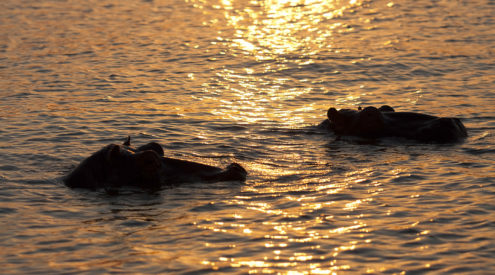If ever our flat, open landscapes and rolling hills and valleys could sing and dance, their song and movements would be those of the larks. There’s something about these birds that is inherently earthy, as if they had once come from mud or from the old, tilled soils of our past. They come in every colour of brown and sometimes these shades combine so cryptically that when the birds move the land seems to move too.
Larks are true ground-dwelling birds; they seem to resist taking flight, only really using the sky during the breeding season or perhaps seeking out new food sources – this is particularly the case with the nomadic species of the more arid regions. There are 27 species of larks in South Africa, including three sparrow-lark species (black-eared, chestnut- backed and grey-backed) which are small, compact larks with conical bills and the only larks in our region that show marked, sexual dimorphism (where males and females have different plumages).
All our lark species are resident in the country year round, with the exception of the dusky lark. This large thrush-like bird with a striking black-and-white facial pattern, heavily streaked breast and strange wing-flicking behaviour is an intra-African migrant and visits South Africa in summer and autumn from the Central African woodlands where it breeds.
Probably the most widespread lark is the red-capped lark. Its range extends across most of the country, with the exception of the northern parts of KwaZulu-Natal. It is a long-winged, slender lark with a short, blackish beak and plain white underparts and adults have a very distinctive, bright rufous cap and epaulettes (shoulder patches) on the sides of the breast, which are normally larger and more prominent in the male. For many bird-watchers, these larks are our most beautiful and certainly the easiest to identify.
During the breeding season – usually spring and summer months – many lark species exhibit display flight behaviours. Arguably the most elaborate and distinctive of these is that of the common, nearendemic eastern clapper lark of our grasslands and open savannas: it climbs steeply, trailing its legs in aerial display and clapping its wings, then it parachutes down, floating rufous-feathered and giving a long, ascending whistle, ‘poooooeeee’. The wing clapping is slow (only 12 to 14 claps a second), which is important to note because the Cape clapper lark, a similar-looking species, also claps its wings, but at a much faster rate (25 to 28 claps a second). Generally the ranges of the two species don’t overlap, but one never knows, so listen to the dance.
For bird-watchers, the sound and sight of larks is synonymous with the open countryside. Their calls often filter softly like the sun: early and low over the ground, leaking bits of melody, illuminating and warming the day. You often hear larks before seeing them. Larks are as integral to our rural mornings as is the sight of cows and crops and they are as integral to our wild dawns as is the view onto acacia trees and herds of game.
In their subtlety and gentle hues and musical nuances, we are reminded of the power of birds.
BirdLife South Africa
To join the organisation or find out more about its projects, visit www.birdlife.org.za.
















